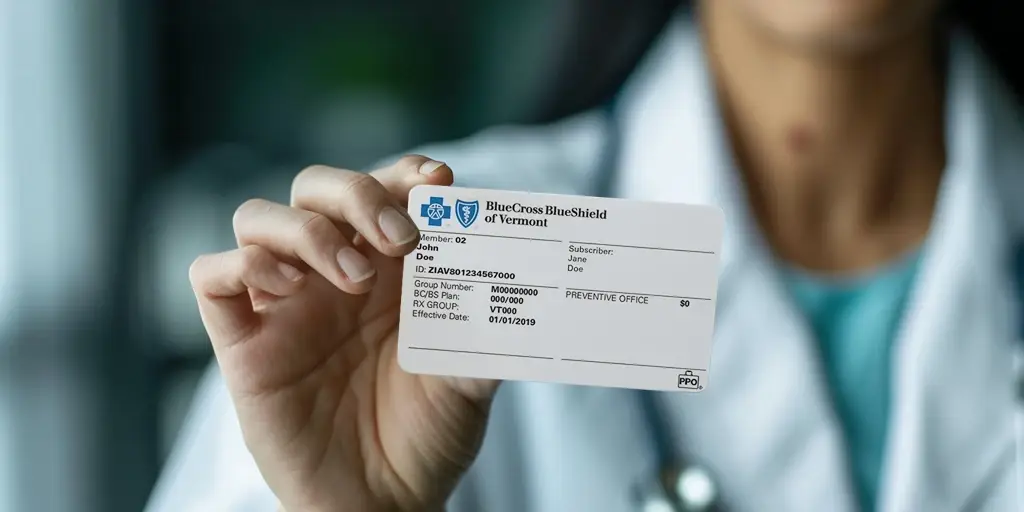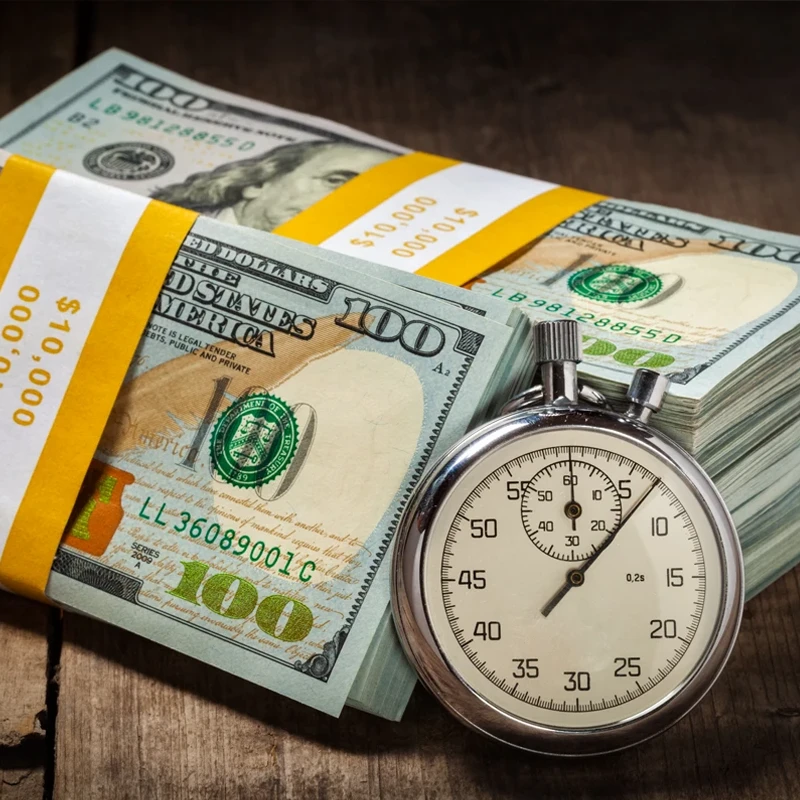
Financial Stability Roadmap
A simple priority guide to achieve financial stability.
Each step has been carefully thought out in terms of human psychology and efficiency. Please be patient and trust the process, it will work.
Phase 1 - Stop The Bleeding
Phase 2 - Strengthen Your Defenses
Phase 3 - Future Proof Yourself
Are you already Financially Stable?
Cover Your Monthly Needs

Completion Goal: Cover all your expenses each month without taking on new debt.
It’s crucial to make sure you can pay all your essential bills every month. These include expenses such as debt payments, rent or mortgage, groceries, and utilities like electricity and water. These are the basics you need to live and keep things running smoothly. Without covering these, it’s hard to focus on anything else financially.
Actions
- Figure out how much money you need to survive per month
- Dial down your spending or earn more money so that you spend less than you make every month.
If you can’t afford your monthly bills, you have two paths to explore:
Do you have a Spending Problem?
First, you might consider cutting back on extra spending. This means stopping purchases on things you don’t need, like eating out often, buying new clothes for fun, or splurging on entertainment. Trimming these extras can help you focus on the things that really matter for your survival.
Do you have an Income Problem?
Second, you can look at ways to increase your income. This could be by working more hours, picking up a side job, or selling things you no longer use. More money coming in will help make sure you’re covering your basics without needing to cut back as much.
Both strategies can help you make ends meet, but combining them can give you the best chance to stay on top of your bills and start building a more secure financial future.
-
How to Calculate Your Monthly Expenses
Managing your finances effectively begins with a clear understanding of your monthly expenses. Knowing exactly where your money goes each month is crucial for budgeting, saving, and planning for the future. Here’s a simple, step-by-step guide to help you calculate your monthly expenses accurately. Learn More
-
Do you have an Income Problem or Spending problem
Are you finding yourself short on cash by the end of the month? Figuring out why can be tough. Most money struggles come down to two things: not earning enough or spending too much. In this article, we’ll help you pinpoint which one is holding you back. Learn More
Save $1000 Safety Net

Completion Goal: Save a $1000 emergency fund in a savings account you don't touch unless you have no other options but to take on more debt.
Before anything else, ensure you have a minimal emergency fund—say $1,000—to cover unexpected expenses without debt. This will help transform the way you look at money. Not relying on debt is a very freeing experience. Although $1000 is not enough to protect you from most problems, it is like having an umbrella in the rain—just enough to give you some peace of mind.
Actions
- Open a no‑fee high‑yield savings account and nickname it “Emergency‑Only.”
- Automate transfers: $100/week (or any amount) until you hit $1,000.
- Create a 14‑day cash sprint: pause dining out, subscriptions, and impulse buys.
- Sell 3–5 items you don’t use (local marketplace, eBay, OfferUp).
- Route windfalls (refunds, gifts, overtime) straight to this account.
If $1,000 feels impossible, pick one path first:
- Trim Fast: Cut one big category for 30 days (e.g., eating out) and redirect the savings.
- Boost Income: Add one short‑term gig (weekend shift/side job) dedicated to this fund.
Imagine This Practical Scenario —Why Emergency Funds Matter

Imagine this: Sarah was living paycheck to paycheck, with just enough to cover her bills and expenses. Then one day, her car broke down, and the repair cost was $1,200—money she didn’t have. Without an emergency fund, she put it on a credit card with a 27% interest rate. By only paying the minimum of $50 a month, it took her over three years to pay it off, and she ended up spending more than $1,800 in total. That one unexpected expense cost her far more than she planned and stretched her already tight budget even thinner.
Now, imagine this happening again a few months later—a medical bill, a home repair, or another emergency. With her credit card already carrying a balance, Sarah had no choice but to add more debt, and the interest started piling up. Soon, she was juggling multiple payments, barely making progress on any of them, and watching her balances grow instead of shrink. What started as a single repair turned into an overwhelming mountain of debt, making it harder to break free. This is how debt spirals out of control, and why having an emergency fund is so critical—it protects you from turning small setbacks into financial disasters.
-
Strategies to Fast-Track a $1000 Emergency Fund
Saving money often requires a combination of strategic planning and disciplined spending. Here are 20 practical ways to cut back on expenses and boost your savings, followed by a concise high-level guide to fast-tracking a $1000 emergency fund. Learn More
-
Strategies to Build an Emergency Fund Fast
In uncertain times, having an emergency fund is more than a financial buffer—it’s a necessity. An emergency fund is a dedicated bank account set aside to cover unexpected expenses such as medical bills, home repairs, or sudden job loss. Ideally, it should cover three to six months of living expenses, but starting one can seem daunting. Here are actionable strategies to build your emergency fund quickly and efficiently. Learn More
Pay Off Predatory Debt

Completion Goal: Pay off any loans that exceed 100% interest.
If you’re dealing with loans that have extremely high interest rates, such as payday loans with rates exceeding 100%, it’s crucial to make paying them off your top financial priority. These types of loans are designed to trap borrowers in a relentless cycle of debt, where the interest grows so fast that it becomes almost impossible to catch up.
Why Predatory Loans Are So Bad
The longer these loans linger, the more they drain your finances, leaving less money for necessities or building a secure financial future. Eliminating these high-interest loans should come before any other financial goals, even before taking advantage of a retirement plan with an employer match. While the employer match is valuable, the cost of delaying repayment on high-interest debt far outweighs the benefits of that match.
Let’s Dig Into a Practical Example
For example, let’s say you borrow $500 with a payday loan that charges $50 for two weeks. That might not sound like much, but if you keep rolling over the loan instead of paying it off, those fees add up fast. Over a year, that $50 fee every two weeks turns into an APY of over 260%—meaning you’d pay more than $1,300 just in interest on a $500 loan! This is why these loans are so dangerous—they can cost way more than you borrowed if you don’t pay them back quickly.
Actions
- List each predatory loan (balance, fees, due dates).
- Stop rollovers; ask for an Extended Payment Plan (EPP) or hardship program.
- Replace with a lower‑cost option (credit union small‑dollar loan, family loan with terms).
- Cut one expense category and divert all surplus to this balance until it’s gone.
- After payoff, close the account and document the win (so you don’t reopen the door).
If you can’t wipe it this month
- Negotiate: Request fee waivers and a fixed payoff schedule in writing.
- Refinance: Move the balance to the lowest APR you can qualify for—then attack it.
-
10 Warning Signs Your Debt Might Be Predatory
Predatory lending practices can trap you in a cycle of debt that is difficult to escape. Recognizing the warning signs of predatory debt can help you protect yourself and make informed financial decisions. Learn More
Max Out Employer Match

Completion Goal: Invest in your company-sponsored 401k until you receive 100% of the match.
Secure all available employer matches on contributions to retirement accounts like 401(k)s. This is effectively free money and should not be left on the table. An employer match is a guaranteed, risk‑free return that compounds for decades.
Actions
- Find the match formula in your benefits/401(k) summary.
- Set your contribution percentage to unlock the full match immediately.
- Choose a simple target‑date or broad index fund allocation.
- Schedule an annual check‑in (raise contributions when you get a raise).
- Turn on auto‑increase (e.g., +1% every quarter) until you’re comfortably above the match.
If cash feels tight
- Micro‑Step: Start with enough to get the match this paycheck.
- Offset: Pause one discretionary line item equal to your new contribution.
-
Why the Employee Match is Unmatched
The concept of an employee match in retirement savings plans like 401(k)s is a game-changer. It’s a benefit offered by many employers, yet its true value often goes underappreciated. Let’s cut to the chase and uncover why the employee match is unmatched in building your financial future. Learn More
Insurance & Deductibles

Completion Goal: Activate all essential insurances and increase your emergency fund until you have enough to cover at least two deductibles.
Insurance keeps a bad day from becoming a financial disaster. Funding deductibles prevents you from swiping a card when something breaks.
Actions
- Confirm active coverage: health, auto, renters/home, term life (if dependents), disability.
- List each deductible; total two of the biggest—save that amount in cash.
- Store policies and claim steps in one place; add calendar renewals.
- For health costs, pair with HSA/FSA if eligible.
Shop and bundle annually to lower premiums.
If premiums are painful
- Raise Deductibles (smartly): Only if your deductible fund is ready.
- Shop Better: Get three quotes; ask about usage‑based or safe‑driver discounts.
-
When to Choose a HSA vs. FSA
Both Flexible Spending Accounts (FSAs) and Health Savings Accounts (HSAs) are popular tax-advantaged accounts used to pay for medical expenses, but they come with distinct rules and benefits. Learn More
Pay Off High-Interest Debt

Completion Goal: Pay off all debt with an interest rate over 6% (excluding your mortgage or rental properties).
Pay off all high-interest debts, credit cards, loans, or any balances with high interest rates. It depends on the current state of the economy, but my rule is that it’s about 60% of the historical average. This means that if you can make, on average, a 10% return on the S&P 500, then any debt 6% would be qualified as a high-interest debt. When expected market returns are ~10% long-term, paying more than 6% is often a mathematical loss. The goal is to free up cash flow and reduce risk.
Actions
- List debts (balance, APR, min payment).
- Pick a method: Avalanche (highest APR first) or Snowball (smallest first).
- Auto‑pay minimums on all; throw every extra dollar at the target debt.
- Call card issuers to lower APR; consider a 0% balance transfer only with a pay‑off plan.
- Add a temporary income stream dedicated to debt destruction.
If you’re stuck
- Lock It Down: Freeze cards; remove stored cards from browsers.
- Get Structure: Consider a nonprofit DMP (debt management plan) to reduce rates.
-
The True Cost of Debt: Calculating Your Losses
Debt is a normal part of life today, but many people don’t see its full impact. It’s more than just making payments—it can slowly hurt your overall finances. Knowing the true cost of debt can help you make better choices and take control of your money. Learn More
-
The Two Best Strategies for Paying off Debt
Want to tackle your debt? Focus on these two strategies to take back control of your finances. Whether you want fast progress or to save on interest, the Snowball and Avalanche methods are the best ways to cut down debt. Pick your approach and start your path to being debt-free today! Learn More
Emergency Fund

Completion Goal: Save 3–6 months of living expenses (minimum $10,000 if six months is under that).
Expand your emergency fund to cover 3-6 months of expenses. This larger safety net provides a buffer against job loss or other major financial disruptions—ideally, a six-month emergency fund. If your six months of expenses are less than $10,000, you should save a minimum of $10,000.
For business owners, those with irregular income, or who leverage a lot of risk (rental properties, options, or high-risk leverage), consider bolstering your emergency fund to 12 months.
Actions
- Calculate monthly “survival” spend; multiply by 3–6 for your target.
- Keep it in a separate high‑yield account (not checking).
- Automate transfers the day after payday; treat it like a bill.
- Define “true emergency” rules to avoid casual withdrawals.
- Refill immediately after any use.
If your income is variable
- Go Bigger: Save 6–12 months.
- Tier It: 1 month in checking buffer, the rest in a high-yield savings account.
-
Law 5 – Build an Emergency Fund
If you don’t have an emergency fund, you’re walking a financial tightrope with no safety net. One unexpected expense—a car repair, a medical bill, or a job loss—can send you into a financial spiral, forcing you to rely on credit cards, loans, or even borrowing from friends and family. And once you’re in that hole, climbing out is twice as hard. Learn More
-
Strategies to Fast-Track a $1000 Emergency Fund
Saving money often requires a combination of strategic planning and disciplined spending. Here are 20 practical ways to cut back on expenses and boost your savings, followed by a concise high-level guide to fast-tracking a $1000 emergency fund. Learn More
-
Strategies to Build an Emergency Fund Fast
In uncertain times, having an emergency fund is more than a financial buffer—it’s a necessity. An emergency fund is a dedicated bank account set aside to cover unexpected expenses such as medical bills, home repairs, or sudden job loss. Learn More
Max Out HSA

Completion Goal: If you have a high-deductible plan, max out your HSA contributions each year.
An HSA is triple‑tax‑advantaged: deductible contributions, tax‑free growth, and tax‑free qualified withdrawals.
Actions
- Verify HDHP eligibility; open the HSA.
- Contribute via payroll (reduces taxable income).
- Invest HSA funds once you’ve met any cash threshold.
- Save receipts; you can reimburse yourself later tax‑free.
- Treat HSA like a “stealth IRA” after your deductible fund is set.
If you’re not HDHP‑eligible
- Use an FSA if offered, or increase emergency/medical sinking funds.
-
When to Choose a HSA vs. FSA
Both Flexible Spending Accounts (FSAs) and Health Savings Accounts (HSAs) are popular tax-advantaged accounts used to pay for medical expenses, but they come with distinct rules and benefits. Learn More
-
A Focused Guide to Health Savings Accounts
Navigating the world of Health Savings Accounts (HSAs) can be overwhelming, but understanding their benefits can significantly enhance your financial and healthcare planning. HSAs offer a tax-advantaged way to save for medical expenses, providing both immediate tax deductions and long-term growth potential. Learn More
Max Out Retirement

Completion Goal: Max your tax‑advantaged retirement accounts (401(k)/403(b)/457 and/or IRA) for the year or reach your retirement goal.
Tax shelters plus automation are the engine of long‑term wealth. After the match, push toward the annual limits. Compounding + tax advantages = larger ending balance for the same dollars saved. After you grab the employer match (Step 4) and handle safety/debt steps, pushing toward the annual limits is the highest‑leverage, lowest‑friction way to build wealth.
2025 numbers to aim for
401(k)/403(b)/gov 457: $23,500 employee deferral limit. Age 50+ catch‑up: +$7,500 (total $31,000). Age 60–63 “super catch‑up”: $11,250 (plan permitting). IRS
IRA (Traditional or Roth): $7,000 total; $8,000 if 50+. Roth IRA full‑contribution income phase‑out starts at $150k (single) and $236k (married filing jointly). IRS
Actions
- Figure out how much money you need to retire.
- Choose Roth vs. Traditional based on current vs. expected future tax bracket.
- Set a contribution rate that mathematically hits the annual limit by year‑end.
- Keep it simple: broad index funds (US total market + international).
- Automate increases (e.g., +1% every quarter) until you reach your goal.
- High earners: consider backdoor Roth strategies (mind pro‑rata rules).
If maxing feels out of reach
- Ramp Plan: Schedule small increases monthly; you won’t feel it.
- Windfall Rule: 50–100% of bonuses/tax refunds go straight to retirement.
-
How to Determine Your Retirement Budget Planning
Retirement should be a time of freedom, not financial stress. But without a clear budget, many retirees find themselves running out of money too soon—or cutting back on the lifestyle they worked hard to achieve. The key to a worry-free retirement? Planning ahead. Learn More
Congratulations on reaching financial stability!
Now that the hard and tedious part is completed. Time to take your money games and life to the next level.

What's Next?
- Taxable brokerage → broad index funds or cashflow dividends.
- Skills & business growth fund (courses, tools, ads that raise income)
- Employee Stock Purchase Plan (buy with discount, sell, reinvest)
- Real estate fund: down payment/rental reserve or low‑cost REITs
- After‑tax 401(k) → in‑plan Roth (aka mega backdoor Roth)
- Treasury bills/notes ladder or money market for 0–2 year goals
- I Bonds (annual limit; inflation hedge)
- 529 plan (if funding education; check state tax perks)
- More…




